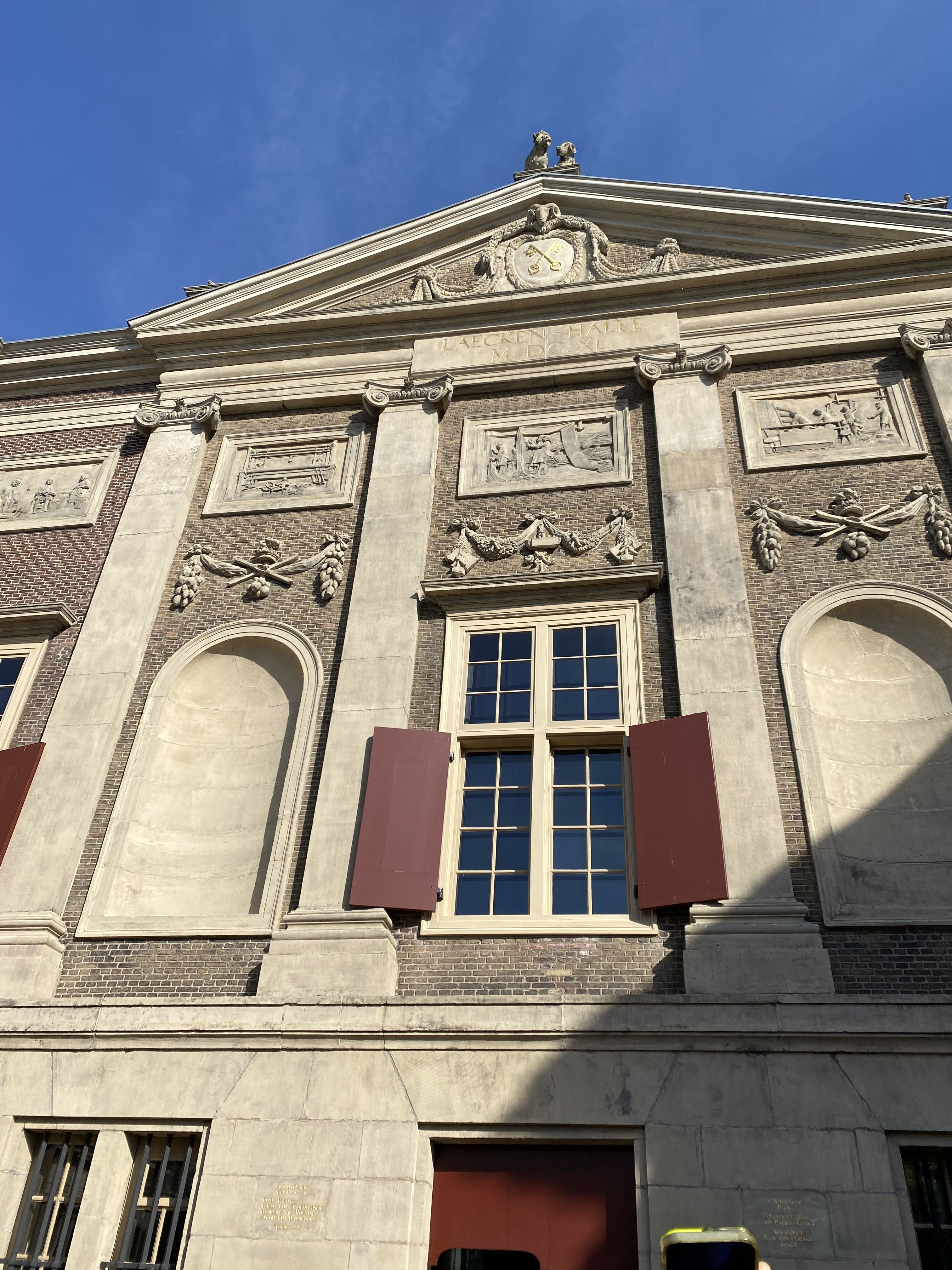Accession card
Description
This image is of the front edifice of the Museum de Lakenhal in Leiden, NL. Carved in the facade are representation of the spinning, weaving, and dyeing process for the historic laken textile produced in Leiden in the Early Modern Era. Through paintings of textiles and their production and the museum is dedicated to telling the history of the laken textile process that was historic to Leiden for centuries until production was halted in 1979. Textile makers used a combination of natural dyes (local dyes as well as dyes imported from various colonies) to create a woolen black textile from merino wool (imported from Spain). The finished product was then sold to various places in Europe, as well as colonies in Africa, the Americas, and Asia. Very importantly, textile production in Leiden played an instrumental role in the facilitation of the slave trade and exchange of products and raw resources to and from the various European colonies. The slave trade and its exploitation of labour directly resulted in the exponential wealth Leiden and other Dutch cities experienced in the sixteenth and seventeenth centuries. Today, tensions regarding Dutch identity in conjunction with the textile history of the nation and dark, unhealed, or sometimes unacknowledged colonial histories seem to be emerging throughout colonial institutions (i.e., museums) located Leiden and other NL cities deeply associated with textile trade and production, such as Tilburg. While there is a sense of Dutch pride and heritage regarding textile history in the Netherlands, there appears to be a lack of acknowledgement or engagement with colonial histories that made the industry so profitable. This is especially illuminated in spaces of cultural heritage. For example, the textile museum in Tilburg did not acknowledge the colonial history but rather focused on how textiles were historically produced and the technicality of the process. The Museum de Lakenhal did acknowledge the Atlantic Slave Trade in the role of textile production in Leiden during the guided tour, but overall, the presence of that history was absent. The Dutch sensibility regarding textile production and more sinister acts of colonialism are perhaps not regarded as the one in the same because of proximity. It is not as intrusive of a thought in the Dutch conscience because there are little to no visible markers of their colonial past in the Netherlands. Other issues, such as Dutch complicities in the deportation of Dutch Jews to Germany during the Second World War, seemed much more evident in the Dutch conscience, as metal suitcases on Leiden streets memorialize Dutch Jews sent to concentration camps from Holland. Although atrocities of the Holocaust did not directly happen in Leiden, the proximity of the event perhaps makes it more prominent in the Dutch collective memory.
Secondarily, this exploration raises questions of: what are transnational histories, what is their relevancy, and how can they be applied? Although I have engaged with transnational narratives in the past, this experience in Leiden feels to be the most in-depth look at a transnational narrative I have explored thus far. The paragraph above begins to locate a complicated history in the context of multiple agents. Although often cited, transnational/global histories are used in different contexts. What exactly do we mean we say we are using transnational histories? Is it a set methodology or is it a loose interpretation of citing interacting, global spaces? Does it require multiple scholars or collaborators to successfully achieve a congruent transnational narrative? What are its limitations?
Code
Date
Location
Title
Medium
- Image



